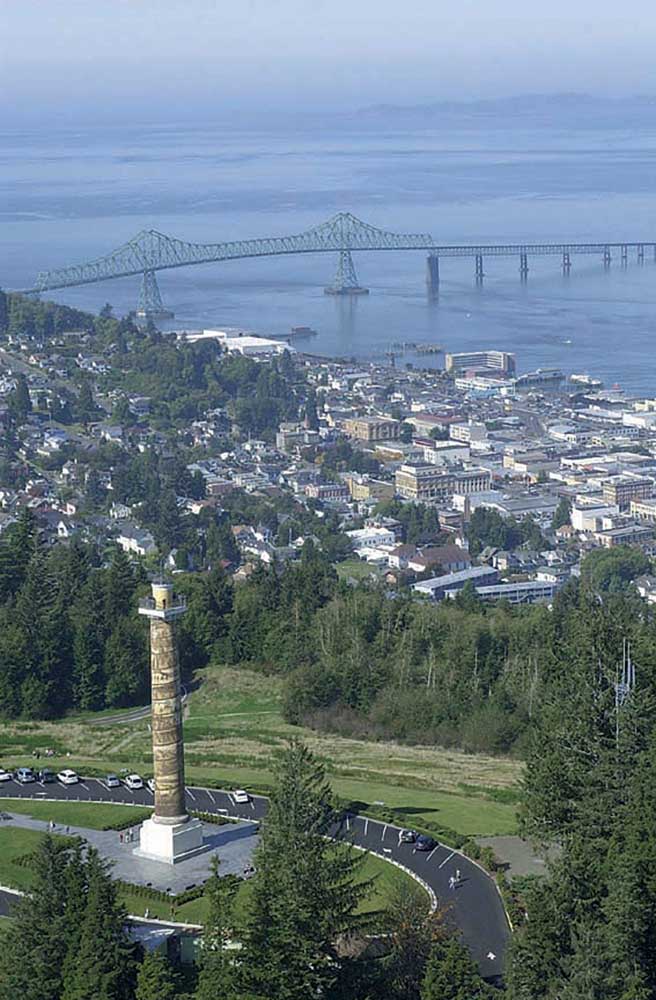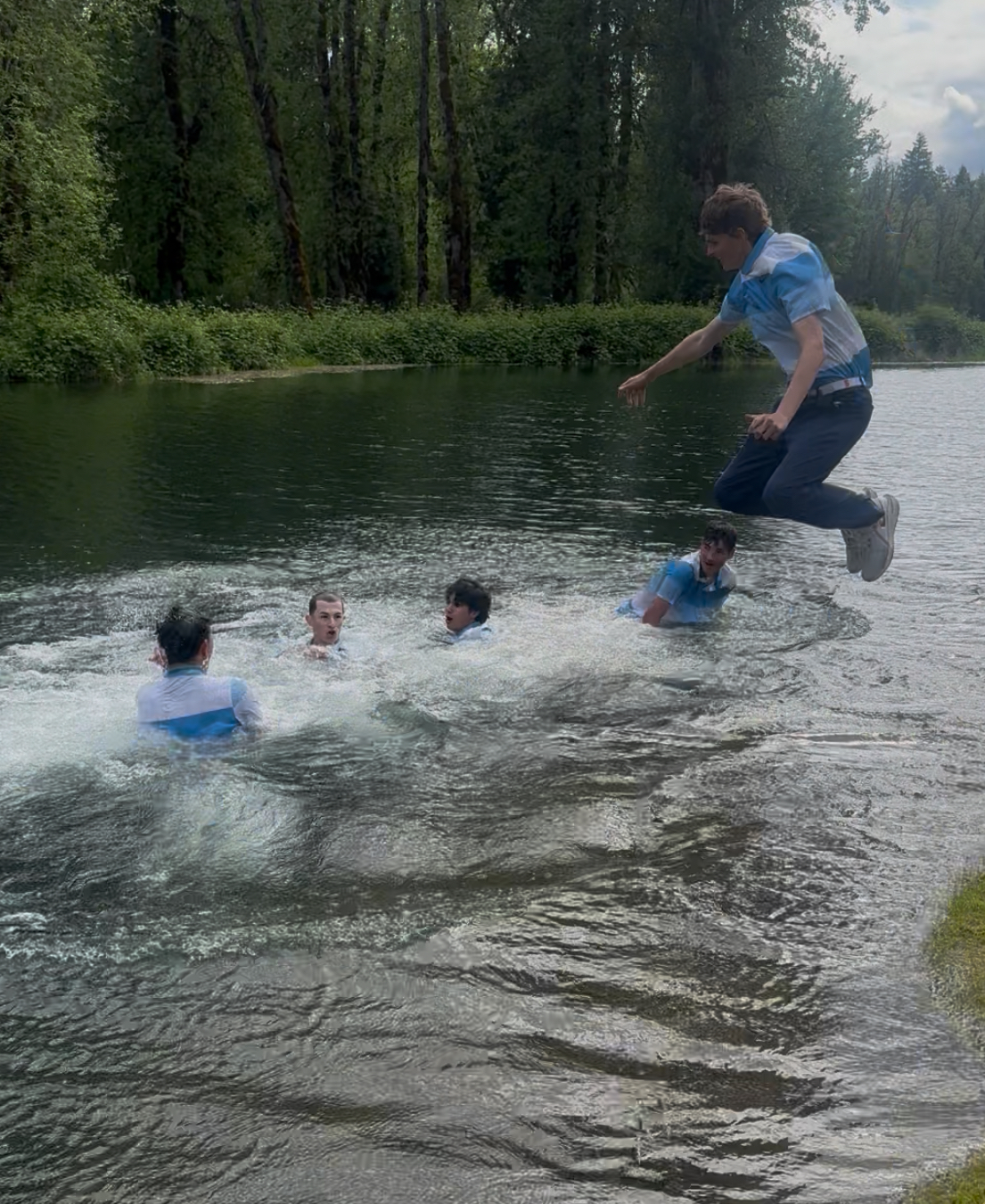Workhorse of the Pacific Theatre ready to take a bow
Published 4:00 pm Monday, November 8, 2004
Volunteers prepare WWII vessel for display at Pier 39 at AstoriaLCI 713 wasn’t much more than a rusted-out shell when David McKay first saw the ship tied up on the bank of the Willamette River in North Portland. But the forlorn vessel caught the 77-year-old Portlander’s attention – he served on the same type of ship during World War II.
That glimpse would eventually get McKay drawn into a six-year project by a dedicated group of volunteers who’ve lent their time and skills to restoring the historic vessel, one weekend at a time.
“To see the condition it’s in now, that makes you quite happy,” he said.
After six years of Saturdays spent sanding, soldering, drilling and painting, the 713’s new “crew” has the 60-year-old warship, moored at a make shift berth near Scappoose, nearly shipshape. And later this month they’re bringing it to its new home in Astoria, where it will eventually be joined by another former Navy landing ship as part of a floating museum dedicated to the story of the amphibious forces that served in World War II, Korea and Vietnam.
Submitted Photo
Showing its age and exposure to the elements, the LCI 713 was in rough condition seven years ago.The two ships’ new home will be Pier 39, whose owner, Floyd Holcom, said the museum will fit in well with the multi-use development of office space, motel and boat yard he’s pursuing at the former cannery facility adjacent to the East Mooring Basin.
“We’re really excited about this,” he said. “This is a good fit.”
Walt James, owner of LCI 713 and its fellow vessel, the Washtenaw County, formed the Amphibious Forces Maritime Museum with the goal of putting the two ships on public display. He and other members of the group spent several months scouting for likely locations when they by chance happened upon Pier 39, where a sign out front invited the public to look around the site.
James walked in, met Holcom, and the two eventually reached on a plan to bring both ships to Astoria.
With cooperation from the weather and tides, the group hopes to bring the 713 to its new home Nov. 20. The Washtenaw, a Landing Ship Tank, is also undergoing restoration by James and his crew, and is expected to head down to Astoria and Pier 39 some time next year.
Volunteer restorer Larry Martin said Astoria’s maritime heritage, its role in World War II and growing tourism industry made the town “the logical place” for the museum, which the group hopes will draw veterans groups, Scouts, schoolchildren and the general public. Long-range plans call for the ships to be made seaworthy and provided for use by Tongue Point Job Corps, MERTS and other local organizations, he said.
LORI ASSA – The Daily Astorian
Tom Barnett, a WWII vet who has volunteered for the past four years restoring a ship much like the one he served on travelling to Okinawa, Pearl Harbor and the Panama Canal, cleans off the rust in the engine room Saturday. Reflecting on his time on the ship, the Cornelius resident says, “I was a young kid, and it was a ball.”Once the restoration is complete, it’s believed the 713 will be the only one of the 1,000 LCI – landing craft infantry – ships built for the war that remain in its original configuration. The 158-foot flat-bottomed vessels, dubbed the “waterbug fleet,” were the unsung workhorses in the military’s numerous seaborne operations in World War II, hauling troops and supplies to invasion beaches from Normandy to Okinawa.
Built in Boston, LCI 713 landed American and Australian troops in various operations in the Pacific in 1944 and ’45, earning a battle star for the engagement at Mindanao. The vessel continued transporting troops around the Philippines for a few months after the end of the war, then, like thousands of former warships, was decommissioned and put up for sale in 1946.
The ship was purchased by a logging company in Stevenson, Wash., that used it to store gear. After several years, it began taking on water and settled onto the mud on the shore of the Columbia, and there it sat for years until the 1970s when bus company owner Arthur Raz purchased the derelict hulk with the dream of restoring it.
Raz died before the project got under way. James, a tugboat captain and maritime history fan who owns a World War II DUKW amphibious vehicle, had been familiar with the 713 from the time it sat half-sunk in the river, and in 1998 he bought the hulk for $7,000 from Raz’ estate and launched his own rehabilitation effort.
“It started out slow – there were only three of us working on it six years ago,” he said. “But as time went on, we started drawing more people to it.”
LORI ASSA – The Daily Astorian
“I was quite disappointed,” says WWII veteran Dave McKay recalling when he first found out he would serve on an LCI, though, eventually, “I became proud of the vessel I was on.”Larry Martin became involved in the project five years ago after meeting James at a history program at the Oregon National Guard’s Camp Withycombe. A military history enthusiast, he said helping restore LCI 713 provides a hands-on connection to the past.
“There are high school students, police officers, tugboaters – from all walks of life, all with a common goal,” he said.
There’s been plenty to keep the group busy. Over the years, half the ship’s steel bulkheads had been cut away, the wiring and lighting was gone, equipment had deteriorated or been removed, and rust covered almost everything.
“It’s like restoring an antique car, just on a grand scale,” James said.
He and his volunteers worked from original blueprints and wartime photos to replace missing parts, scavenging them from other vessels or fabricating them from scratch. The group was determined to find all authentic equipment, either original or replacement, that matches what was originally on the ship, down to lights and switches. Even the curtains hung in the doorways are regulation green.
Many of the volunteers are electricians or welders. Those without special skills can still help – in particular, with painting.
“You could paint every day on this ship, and you would never paint everything,” said Jeff White of Vancouver, the ship’s new cook, whose 13-year-old son also lends a hand.
ON THE WEBMore information on the ships and the restoration effort is available on the Web at
(www.amphibiousforces.org)The volunteers include a number of Navy veterans, including former LCI crew members like McKay. Amidst the flying dust and screech of a sander down in one of the troop compartments, volunteer and LCI vet Gordon Smith, 83, joked that he and the other veterans on the crew “have spent 60 years trying to forget, and they want us to remember.”
Once open to the public at Pier 39, the two ships will feature “crews” dressed in World War II-era Navy uniforms.
“It’s like a time machine,” James said. “It will give the impression what it was like on an LCI in ’44 and ’45.”
The other ship, the Washtenaw County, also known as LST 1166, supported U.S. Special Forces and Swift Boat operations in Vietnam, and became the most-decorated landing vessel in the war. Now moored near Rainier, the 380-foot vessel is awaiting restoration by James’ group, a project expected to last six to nine months.





